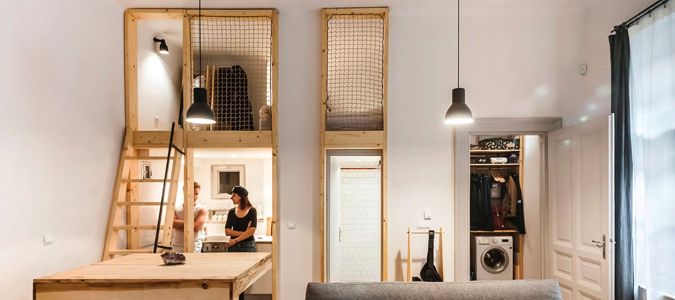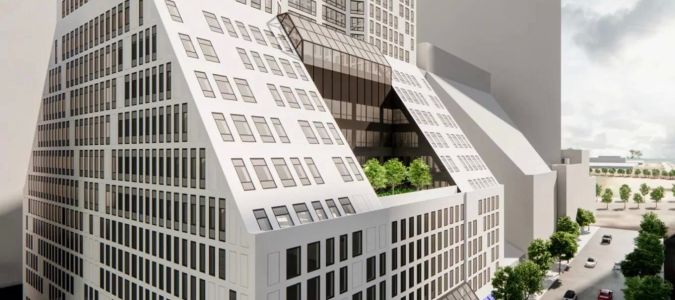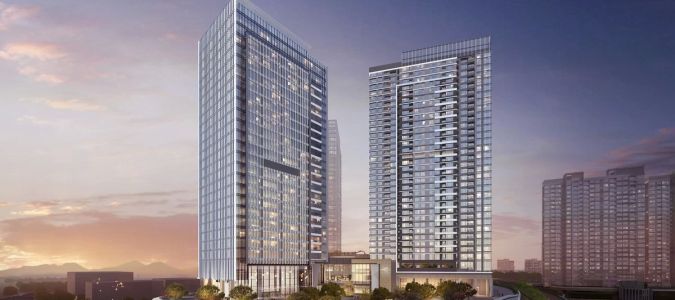In recent years, the Brooklyn neighborhood of DUMBO (Down Under the Manhattan Bridge Overpass) has experienced a dramatic transformation. Once a hub of industrial activity, DUMBO has now become a vibrant center of creativity, with a strong focus on technology, innovation, and the arts. The area's shift from gritty warehouses and factories to trendy offices, luxury apartments, and art galleries signals a broader urban revival that has reshaped not just this iconic neighborhood, but also the entire borough of Brooklyn. The evolution of DUMBO provides an intriguing case study of how urban spaces can reinvent themselves through investment, creativity, and community engagement.
Historically, DUMBO was known for its industrial roots, particularly as a waterfront area supporting shipbuilding, manufacturing, and warehousing. Its location between the Brooklyn and Manhattan Bridges made it a strategic point for trade, but the area fell into decline by the mid-20th century as factories moved out and the city's industrial base shrank. However, the late 20th century saw the beginnings of gentrification in Brooklyn, and DUMBO emerged as a hotbed for creative professionals, from artists to tech entrepreneurs. This transformation has not only changed the physical landscape of DUMBO but also its social and economic fabric.
Today, DUMBO is recognized for its unique blend of old-world charm and cutting-edge innovation. New developments, such as 10 Jay Street, play a central role in shaping the area's future by offering modern office spaces for tech companies and creative enterprises. The neighborhood is now home to an increasing number of startups, designers, and digital artists, further fueling its reputation as a hub for creativity. With its mix of industrial architecture and contemporary design, DUMBO stands as a testament to the power of urban transformation, where history meets the future.
1. The Rise of DUMBO’s Creative Economy
The shift from an industrial powerhouse to a creative district in DUMBO did not happen overnight. In the 1980s and 1990s, artists and creatives began moving into the area, attracted by its affordable rent and the unique atmosphere created by the industrial remnants. The soaring ceilings of old warehouses and the abundant open space offered an ideal environment for studios and galleries, allowing local artists to thrive. Over time, this influx of artists laid the groundwork for a cultural transformation that would turn DUMBO into one of Brooklyn’s most desirable locations.
As the artistic community in DUMBO flourished, the neighborhood began to attract more commercial interests. By the early 2000s, technology startups started to take notice of the area’s growing reputation as a creative hotspot. The proximity to Manhattan, combined with the influx of talented individuals, made DUMBO an ideal location for innovation-driven companies looking to capitalize on Brooklyn's creative energy. These companies, often involved in design, media, and digital technology, became key drivers of the neighborhood's economic growth.
One of the most visible signs of DUMBO’s new creative economy is the transformation of its real estate landscape. Previously, warehouses and factories were repurposed into high-end lofts, coworking spaces, and tech offices. New developments, such as the 10 Jay Street building, exemplify this shift, offering state-of-the-art facilities in a historic setting. These spaces have become a magnet for tech companies and creative entrepreneurs, fostering collaboration and innovation.
2. Tech Startups and Innovation in DUMBO
In recent years, DUMBO has become a breeding ground for tech startups. Many young companies, particularly in the fields of digital media, e-commerce, and software development, have set up shop in the area. DUMBO’s proximity to Silicon Alley, New York's tech hub, has only added to its appeal as a location for new ventures. The area’s creative and collaborative atmosphere provides fertile ground for innovation, with coworking spaces like WeWork and startups such as Etsy calling DUMBO home.
The tech sector in DUMBO has been bolstered by the neighborhood's infrastructure, which blends historical charm with modern amenities. The combination of artistic flair, large open spaces, and affordable office spaces has attracted a wide range of tech startups. As a result, DUMBO has become an essential part of the New York City tech ecosystem, offering both established companies and startups an ideal place to grow.
One prominent example of this trend is the growth of companies in the digital design space. Many design studios, web development agencies, and video production companies have found a welcoming home in DUMBO. With its creative atmosphere and strong community of like-minded professionals, DUMBO has solidified its reputation as a place where technology and creativity intersect.
3. The Role of Real Estate in DUMBO’s Transformation
Real estate development has played a pivotal role in DUMBO’s transformation from industrial wasteland to a creative hotspot. As demand for space in the neighborhood has increased, developers have sought to repurpose existing structures, preserving the area’s historical character while introducing modern amenities. The result is a unique blend of old and new, where gritty industrial buildings coexist with sleek, contemporary design.
Projects such as 10 Jay Street exemplify the type of real estate development that has helped reshape DUMBO. The building’s innovative design combines the old industrial architecture with modern features like glass facades and energy-efficient systems, making it a desirable location for creative businesses and tech startups. The success of these developments has contributed significantly to DUMBO’s reputation as a hub for innovation and creativity.
The rise of luxury apartments and high-end retail spaces in the area has also driven the gentrification of DUMBO, attracting residents and businesses from across the city. While some argue that this has led to displacement and rising costs, others see it as a necessary step in revitalizing the area and supporting the growing demand for creative spaces. Regardless of the debate, it is clear that real estate development has been integral to the neighborhood's revitalization.
4. DUMBO’s Cultural and Artistic Identity
At the heart of DUMBO’s transformation lies its cultural and artistic identity. The neighborhood’s history as a center of industry may have initially shaped its physical layout, but it is the creative community that has truly defined its character. Today, DUMBO is known for its thriving arts scene, which includes galleries, performance spaces, and cultural institutions like St. Ann’s Warehouse, a renowned theater company.
The presence of art galleries and performance spaces has drawn not only local talent but also international artists and cultural organizations. This has transformed DUMBO into a cultural destination, attracting visitors from around the world who come to experience the unique fusion of history and creativity that the area offers.
The arts community in DUMBO has also contributed to its economic growth. Cultural events, art exhibitions, and performances draw large crowds, supporting local businesses and boosting tourism. Moreover, the neighborhood’s cultural offerings have helped to attract a young, creative workforce that values both artistic expression and innovation.
5. The Impact of DUMBO’s Revitalization on Brooklyn
The revitalization of DUMBO has had a ripple effect throughout Brooklyn, spurring similar transformations in other neighborhoods. As DUMBO evolved into a creative and economic powerhouse, nearby areas such as Williamsburg, Brooklyn Heights, and Downtown Brooklyn have also seen significant growth. The influx of creative professionals and tech startups into DUMBO has helped to catalyze broader economic development across the borough.
One of the most significant impacts of DUMBO’s revitalization has been its role in shifting the perception of Brooklyn as a whole. Once considered an industrial and working-class area, Brooklyn is now seen as a cultural and economic powerhouse in its own right. The success of DUMBO has helped to position Brooklyn as a global destination for innovation, creativity, and talent.
This broader transformation has brought with it a host of challenges, including rising housing costs and concerns about gentrification. Nonetheless, the revitalization of DUMBO has been a crucial part of Brooklyn’s overall resurgence, attracting investment and new businesses to the borough while also preserving the area's rich cultural history.
6. Looking to the Future: DUMBO’s Continued Growth and Evolution
As DUMBO continues to evolve, its future looks bright. The neighborhood’s unique blend of creativity, innovation, and history positions it as a model for urban transformation. The ongoing development of properties like 10 Jay Street ensures that DUMBO will remain at the forefront of Brooklyn’s creative economy, providing space for businesses and individuals to innovate and collaborate.
However, as DUMBO grows, it faces important questions about sustainability and inclusivity. How can the neighborhood continue to foster creativity while ensuring that it remains affordable and accessible to a diverse range of people? These are crucial considerations as DUMBO enters the next phase of its development.
Looking ahead, DUMBO’s continued success will depend on its ability to balance innovation with community engagement. As long as the neighborhood remains true to its creative roots, it will undoubtedly continue to thrive as a center of culture, commerce, and innovation in Brooklyn.
In conclusion, DUMBO's evolution from an industrial center to a creative and technological hub reflects the broader changes happening in urban areas around the world. Its transformation has created a unique space where creativity and innovation can flourish, supported by a robust economy, a rich cultural heritage, and a forward-thinking approach to development. As DUMBO continues to grow, it will be interesting to see how it navigates the challenges of gentrification and affordability while maintaining its identity as a thriving center of creativity and innovation. For those looking to be part of this exciting new era, places like 10 Jay Street offer an opportunity to engage with this dynamic community at the intersection of industry and creativity.








